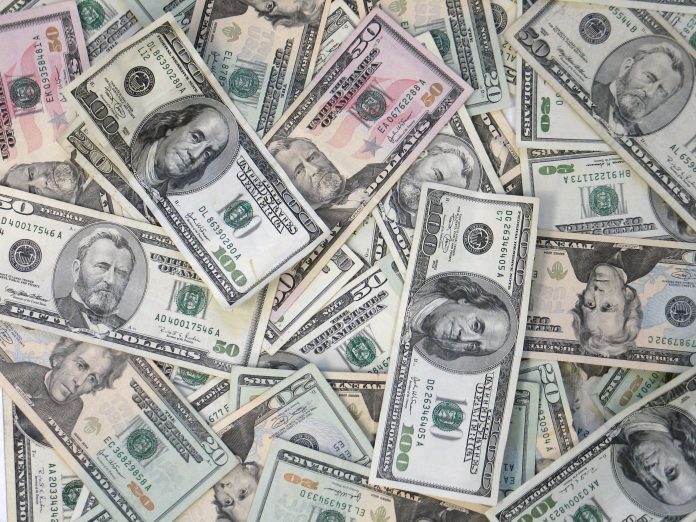Paper money is the most common form of currency in the world today. Paper money can be used to purchase goods and services, or it can be exchanged for other forms of currency such as coins and metal bars. Paper money is also referred to as banknotes. Paper money is made from cotton fibers that are pressed together to form sheets with specific denominations printed on them.
The first paper money was issued by China more than 2,000 years ago when they began using silk fabric instead of coins in trade between provinces. The Chinese government continued issuing paper notes until 1910 when they switched over exclusively to copper coins made from melted down bronze statues due to a shortage of raw materials needed to make banknotes.
The invention of paper money
Paper money is an alternative form of currency. It is used as a medium of exchange in many countries and regions. Paper money can be made of various materials, including cotton, linen, silk and plastic. The most common form of paper money in use today is fiat money, or currency that has no intrinsic value and has value only because the government supports it by law.
The invention of paper money is credited to Sir John Denham, who proposed that bills of credit should be issued by Parliament during the War of the Spanish Succession (1701-1714). His proposal was rejected by King William III and his Privy Council, but other proposals for such bills were put forward over the next 100 years.
In 1775, Massachusetts became the first state to issue paper currency when it authorized the printing of bills worth $200,000 to finance its participation in the American Revolution against Great Britain.
How the world has profited from paper money
For centuries, paper money has been used as a medium of exchange and a store of value. The use of currency is essential to the operation of any economy, and its importance has only grown with the advent of globalization. Despite its long history, paper money is still very much in its infancy compared to other forms of money like gold or cryptocurrency.
Paper money was first introduced by China during the Tang Dynasty in the 7th century, but it wasn’t until the 13th century that it became a popular medium of exchange across Asia. At first, people didn’t trust paper money because they thought it was worthless compared to coins made out of precious metals like gold or silver.
You could carry more money without feeling weighed down or getting robbed by thieves; you could spend less time looking for change when buying something small; and if there was a shortage in coins in circulation due to war or hoarding by merchants, people could still use paper notes to buy goods and services.
What the paper money is made out of
The paper money is made out of a blend of cotton and linen. It is not very strong and it will tear easily, so it must be handled with care. The paper used in the making of currency has to meet high standards set by the Bureau of Engraving and Printing (BEP). The BEP certifies that each sheet meets high standards before it can be used for printing currency.
The BEP follows guidelines set by the Federal Reserve, which specifies that currency needs to last at least four years and five months before it is replaced. The Federal Reserve also sets guidelines for watermarks and security threads that help prevent counterfeiting.
Where did the idea for paper money come from
The origin of paper money can be traced back to China. During the Tang Dynasty, money was made from linen and silk. However, there were some issues with this material that made it difficult to use as money. It was not durable enough and could not be stored easily. In order to solve these problems, people started using paper as a medium for storing value.
The idea of using paper as money spread throughout Europe during the Middle Ages when people traded coins with each other using pieces of paper as collateral. This gave rise to cheque books that were used by traders to record transactions until they settled their accounts at a later date.
How does a country get started with its own currency
The easiest way to do this is if you are an independent country with your own central bank. Then you can just print your own money and put your own stamp on it. But what if you’re not an independent country? Then the answer is a little more complicated—but not too complicated. The first step is to set up your own central bank, which is usually done by law.
This can be done in any number of ways; the important thing is that it should be done with the consent of the people who use the currency, who are typically citizens or residents of some kind . When this has happened, then you can issue paper money at will, just as any other central bank does today.
Conclusion
Paper money is a vital part of everyday life. The use of coins and paper money is generally accepted in places where they are required. Paper money is printed by the government and its design has evolved to make it more useful. It is desirable due to its precious metal contents but also causes trouble when it gets old. Money can be exchanged for goods, services, or other money, depending on its value. In earlier times, people bartered goods to purchase things they wanted or needed. Coins were introduced because metals could easily be stored and reused as mediums of exchange.



 Bitcoin
Bitcoin  Ethereum
Ethereum  Tether
Tether  XRP
XRP  Solana
Solana  USDC
USDC  Cardano
Cardano  TRON
TRON  Lido Staked Ether
Lido Staked Ether  Avalanche
Avalanche  Toncoin
Toncoin